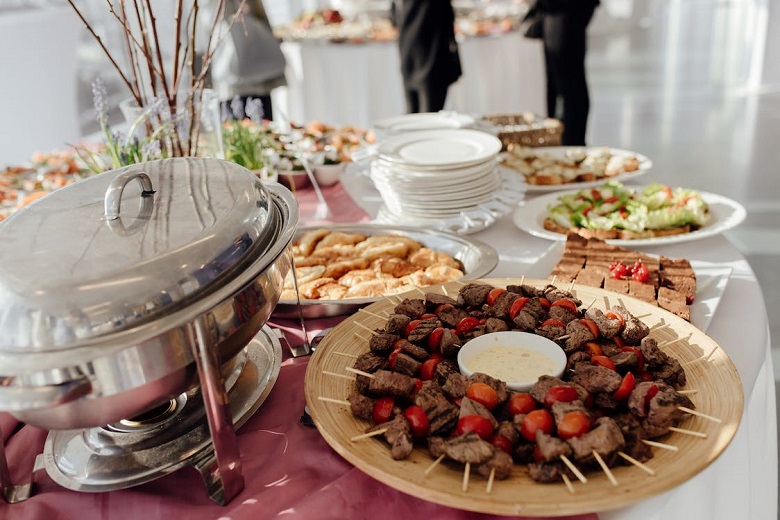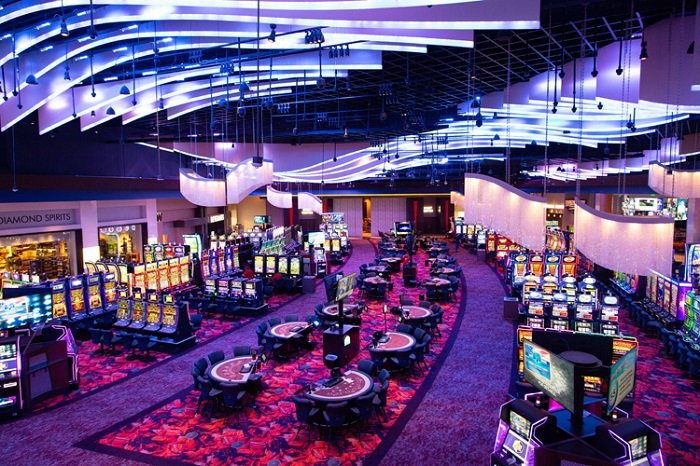From Appetizers to Desserts: Comprehensive Buffet Catering

Buffet catering, with its roots in grand feasts of yesteryears, has evolved tremendously over the decades.
Once merely a spread of sumptuous dishes laid out for guests, it has now morphed into an art form, blending culinary traditions and contemporary tastes.
From weddings to corporate gatherings, buffets offer a versatile dining option, seamlessly catering to diverse palates and dietary preferences.
Their significance in events cannot be overstated. Not just a method of serving food, the buffet system is a reflection of a host’s hospitality, a display of culinary prowess, and an invitation for guests to bond over shared meals.
As we journey through its history and nuances, one realizes that buffet catering is not just about sustenance, but an experience, a tradition, and a statement.
Origins and Evolution
The concept of buffet catering traces back to the lavish feasts of ancient civilizations, where opulent spreads were laid out for kings, nobles, and guests.
Sweden popularized the “smorgasbord” in the 16th century, a precursor to modern buffets, showcasing an array of cold dishes.
As this idea traversed borders, each culture added its own flavour, transforming the buffet into a global phenomenon.
With the onset of the industrial revolution and urbanization in the 19th century, hotels and restaurants began offering buffets to cater to a larger audience efficiently.
Over time, the buffet evolved, not just in variety but in presentation and theme.
From the classic silver-tray setups to contemporary live-cooking stations, the buffet has been reinvented countless times, yet its core remains unchanged: a communal experience of indulgence, choice, and abundance.
Today, it stands as a testament to the culinary world’s adaptability and innovation.
Classic Buffet Styles
The classic buffet is a nostalgic trip to an era of elegance and tradition.
Rooted in history, these buffets often feature iconic dishes like roast meats, classic salads, and timeless desserts, each carrying stories of culinary heritage.
The presentation is an art in itself, with meticulous arrangements on polished silver trays and ornate chafing dishes, exuding grandeur.
Draped tablecloths, candlelit ambiances, and cascading floral arrangements complete the look.
These buffets were designed with a universal appeal in mind, ensuring there’s something for everyone.
Whether it’s a dish reminiscent of grandma’s Sunday dinners or an exotic delicacy, classic buffets have a way of bridging generations and tastes.
In essence, they are a harmonious blend of taste, tradition, and togetherness.
Contemporary Buffet Trends
The modern buffet is a melting pot of creativity, drawing from global influences and catering to contemporary tastes.
From fusion gastronomy to sustainable choices, buffets have transformed to offer not just a meal, but an experience that resonates with the evolving diner’s palate and values.
List of Contemporary Buffet Trends:
- Fusion Dishes: Combining diverse flavours, such as sushi burritos or curry pizzas, to create unique, palate-enticing dishes.
- International Cuisines as Mainstays: Beyond being mere exotic additions, global dishes have become integral, offering a worldwide culinary journey.
- Interactive Food Stations: These add a theatrical flair to dining, with chefs preparing dishes live, ensuring both engagement and freshness.
- Emphasis on Sustainability: Highlighting organic, locally-sourced ingredients, with an extensive array of vegetarian and vegan choices.
- Evolution in Presentation: Modern buffets feature sleek setups, digital interfaces, and advanced equipment like induction warmers, seamlessly blending the traditional with the cutting-edge.
Advantages of Buffet Catering
Catering to Diverse Dietary Needs and Preferences
In an age where individual dietary needs and preferences are more varied than ever, buffet catering emerges as a preferred choice.
It offers a wide array of dishes, ensuring there’s something for everyone.
Whether guests are vegetarian, vegan, gluten-free, or have specific cultural culinary preferences, the buffet’s vast spread ensures they won’t go home hungry.
This flexibility not only enhances guest satisfaction but also ensures inclusivity.
Encouraging Social Interactions and Networking
Buffets inherently promote movement and mingling. Guests aren’t confined to a fixed seat; they can roam, interact, and network.
This casual and interactive atmosphere is especially beneficial for events like corporate gatherings or weddings, where fostering connections is key.
As guests discuss their favourite dishes or queue for a serving, organic conversations spark, making the event memorable and lively.
Maximizing Variety with a Controlled Budget
Buffets can be a budget-friendly catering option. Instead of preparing multiple plated meals, which might go uneaten, guests can choose what they like, reducing waste.
Bulk preparation and the absence of individual serving can also bring down costs.
Furthermore, hosts can offer an expansive variety of dishes without significantly inflating expenses, ensuring guests experience abundance without breaking the bank.
Buffet catering, with its myriad advantages, has cemented its position as a top choice for events, seamlessly blending practicality with the promise of a gastronomic adventure.
Considerations for a Successful Buffet
While buffet catering offers myriad advantages, ensuring a seamless experience requires meticulous planning and foresight. Here are key considerations to bear in mind:
- Design a layout that promotes a smooth flow, preventing bottlenecks and crowding. Consider factors like entry and exit points, accessibility, and the logical sequence of dishes.
- Implement strict hygiene standards. Use sneeze guards, provide serving utensils for each dish, and discourage guests from using their hands.
- Ensure hot dishes stay hot and cold dishes remain cold. Utilize quality chafing dishes, warming trays, and cooling stations to maintain appropriate temperatures and preserve the quality of the food.
- Plan for efficient food storage for potential leftovers and ensure a system for swift clean-up. Consider donating untouched food to local shelters or composting organic waste.
- Ensure you have enough staff on hand to assist guests, replenish dishes promptly, and address any on-the-spot concerns or queries.
By addressing these considerations, hosts can ensure their buffet runs smoothly, providing a delightful and hassle-free experience for guests.
Personalizing Buffet Experiences
In today’s era of personalization, the buffet is no exception. It offers a canvas for creativity and individuality, ensuring every guest feels catered to.
Theme-based buffets are gaining momentum, allowing hosts to transform a simple meal into an immersive experience.
Buffets now include options catering to popular diets like Keto, Paleo, and more, ensuring everyone can indulge without compromise.
Lastly, the beverage and dessert sections have been elevated to art forms.
Customized drink stations with signature cocktails or artisanal teas and coffees pair seamlessly with unique dessert spreads, featuring anything from global sweet treats to avant-garde confections.
Truly, the modern buffet is a curated journey, tailored to delight every individual palate.
Challenges in Buffet Catering
While buffet catering offers unparalleled variety and a sense of indulgence, it comes with its own set of complexities. These challenges, when navigated well, can truly set apart a successful buffet experience:
- With an extensive spread, there’s potential for leftover food, leading to significant wastage. Finding a balance between abundance and efficiency becomes crucial.
- Catering to a broad audience means accounting for varied tastes, preferences, and dietary restrictions. Crafting a menu that pleases everyone is a daunting task.
- Ensuring a smooth flow of guests, especially during peak times, requires meticulous planning. Overcrowding can lead to a diminished experience for guests.
- As dishes are prepared in bulk, maintaining the same taste, temperature, and presentation for each serving is a challenge that demands skill and attention to detail.
Addressing these challenges is essential for buffet caterers to ensure that the dining experience is memorable and seamless for all guests.
Conclusion
Buffet catering, with its deep-rooted history and modern adaptations, remains a popular choice for events, blending tradition with innovation.
The allure of variety, interactive experiences, and personalized options cater to the evolving tastes of today’s diner.
However, like any venture, it presents challenges—from waste management to crowd control.
Successful buffet experiences hinge on a balance: merging abundance with efficiency, variety with consistency. As we move forward, the buffet, while maintaining its essence, will undoubtedly continue to evolve, reflecting global culinary trends and societal values.
It stands as a testament to the culinary world’s adaptability, creativity, and enduring appeal.











